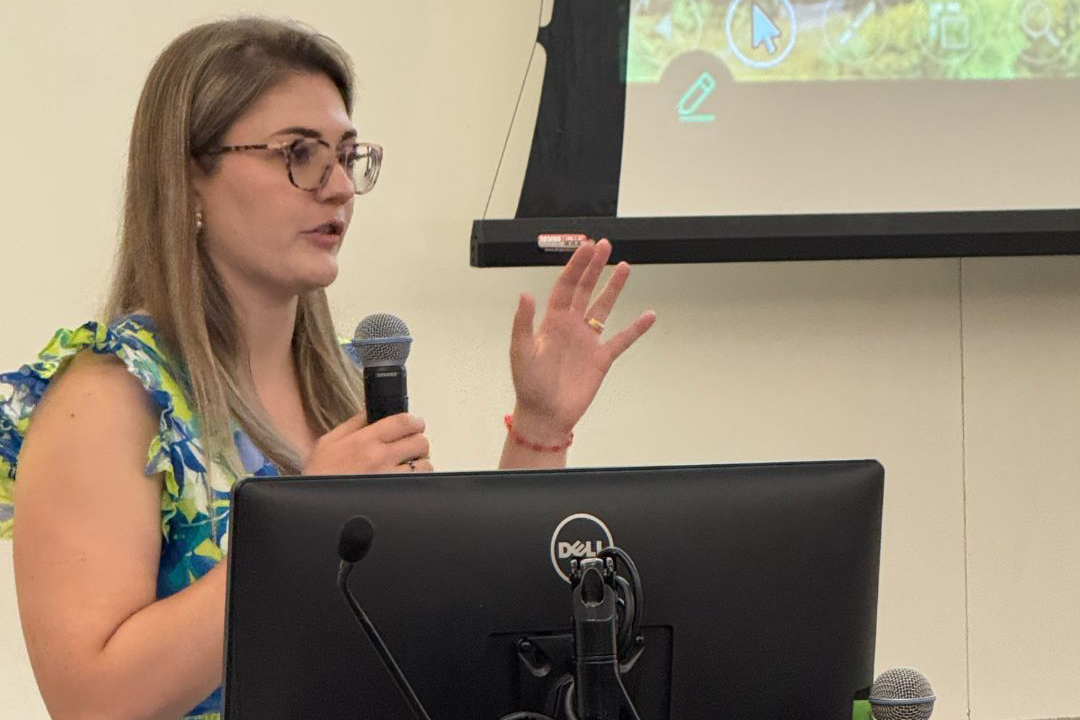Our summer 2025 graduates presented their Capstone Projects on August 1st to an enthusiastic audience. Congratulations to Arielle Plavcan and Michael Shenk. We are so proud of each of you.
The Capstone is the culminating experience for students in the master’s program in Sustainable Urban Planning (SUP). Students complete individual projects to showcase the knowledge, skills and abilities they have learned. Students’ research projects are used to demonstrate mastery of the program’s key skills and knowledge. Students often share their capstone and studio projects with prospective employers and on LinkedIn to show that they can do professional-level planning work. Each capstone project has a specific audience who can use the student’s work to advance their goals.

Arielle Plavcan
"Resilient Rebuilding: How Integrating Nature-Based Solutions into Flood Recovery Can Propel Cities Towards Resilient Future"
Abstract: Flooding is the most common and costliest natural disaster in the United States. As the cost of flood recovery is increasing and flooding is projected to worsen, it is critical that urban planning professionals understand how to build cities that have stronger natural protections. Nature-based solutions are an effective urban planning strategy to address flooding and promote long-term growth.
Through a qualitative approach that includes a comparative case study - Hoboken, New Jersey and Charles City, Iowa - are examined to understand how they successfully implemented nature-based solutions and overcame barriers other cities could not. Lessons learned are transformed into a set of five Best Practices that urban planning practitioners and policymakers can turn to when seeking to use nature-based solutions in their own flood recovery. Additionally, the study provides actionable recommendations for how to strategically use nature-based solutions as tools for long-term growth and resilience.
Key takeaways for urban planners include: 1) strong local leadership is critical; 2) green-grey infrastructure can be effective if it mimics natural flood control; 3) lean into nature-based solutions as economic growth tools; and 4) build strong partnerships across sectors and the community.

Michael Shenk
"Unpacking Opportunity Zones & Public-Private Financing for Equitable and Green Projects"
Abstract: The One Big Beautiful [MS1] Bill is now the One Big Beautiful Bill Act (OBBBA). Currently there is no rulemaking on Opportunity Zones (OZs) 2.0, so the application of law is still unknown. Economic development professionals, investment professionals, developers and local governments are beginning to grapple with changes to OZs and other changes in the OBBBA pertaining to economic development. By investigating and reviewing literature from the first iteration, we can draw some understanding about OZ 2.0.
Using these insights planners can begin preparing for these changes for census tracts in their cities and regions. This paper proposes near-term actions planners can take to make census tracts in their city/region investment-ready, and they can do this in a way that is sustainable and equitable. That said, there are many challenges with OZs. Though the possibility for new investment exists, there are many places that did not receive any new investment in the first round of OZs. This paper will explore these challenges and speak to what planners can do today to prepare for OZ 2.0.
"The capstone project is the culmination of each student’s experience in our program and the showcase is their opportunity to share that work with our community. I’m so proud of each of our summer graduates and their accomplishments."
Dr. Sandra Whitehead
Program Director, Sustainable Urban Planning Program
Interested in learning about more student Capstone projects? Check out a story about the spring 2025 Sustainable Urban Planning Program graduates.


